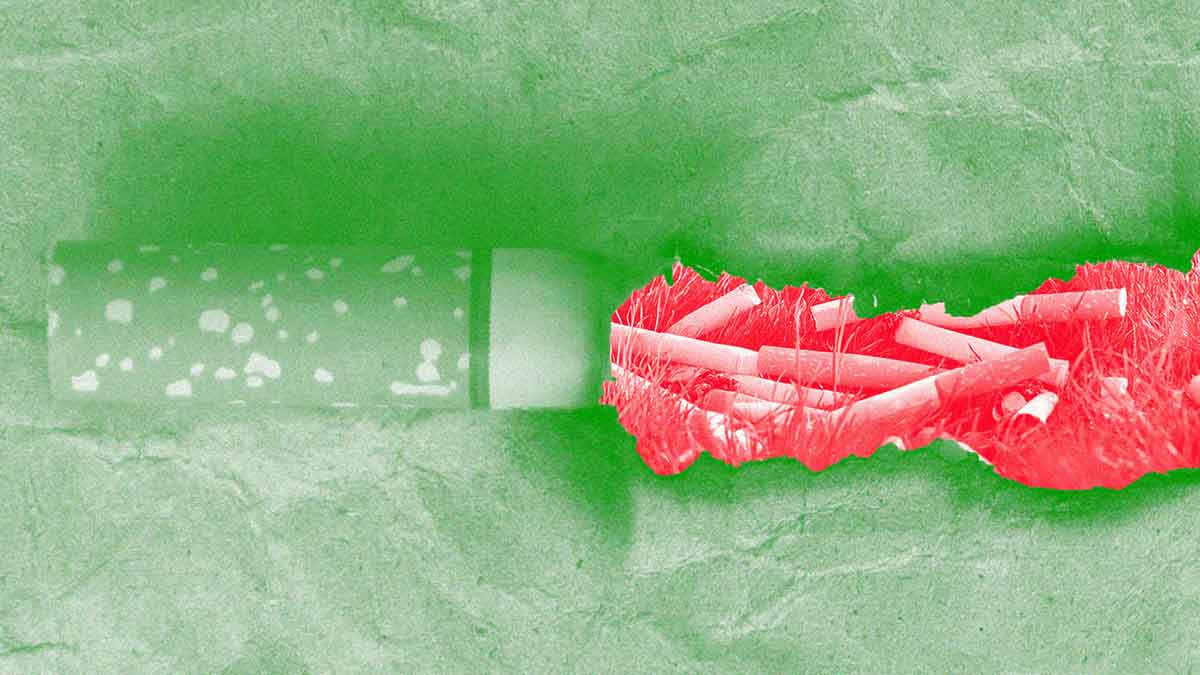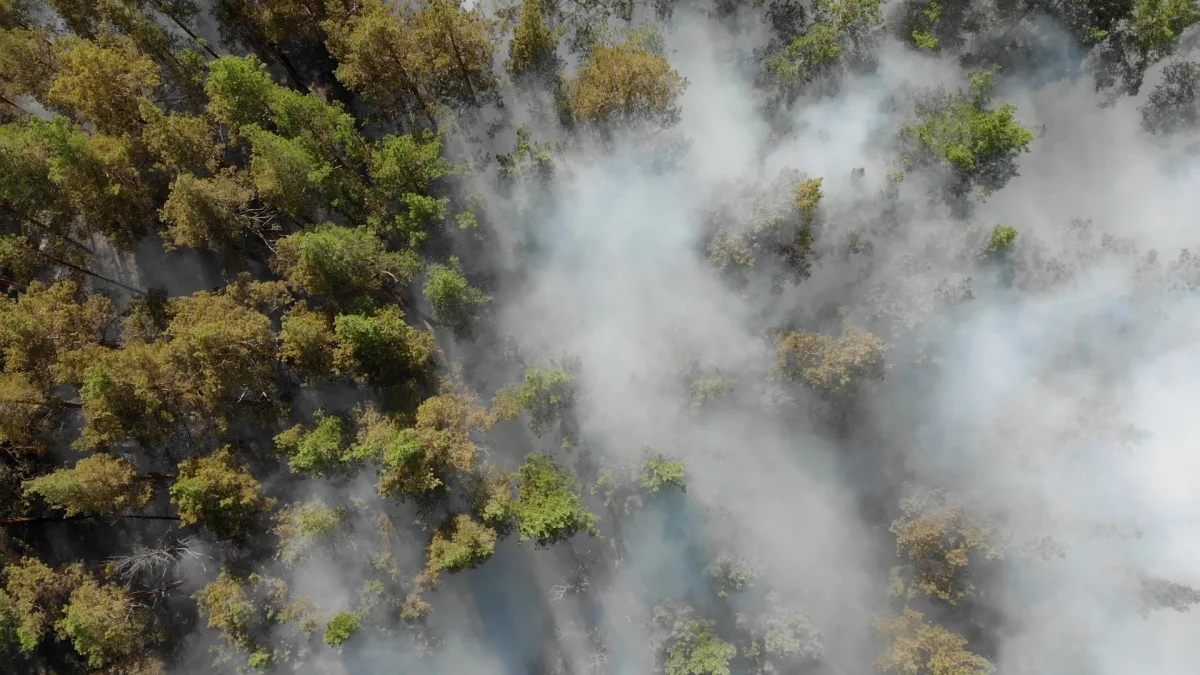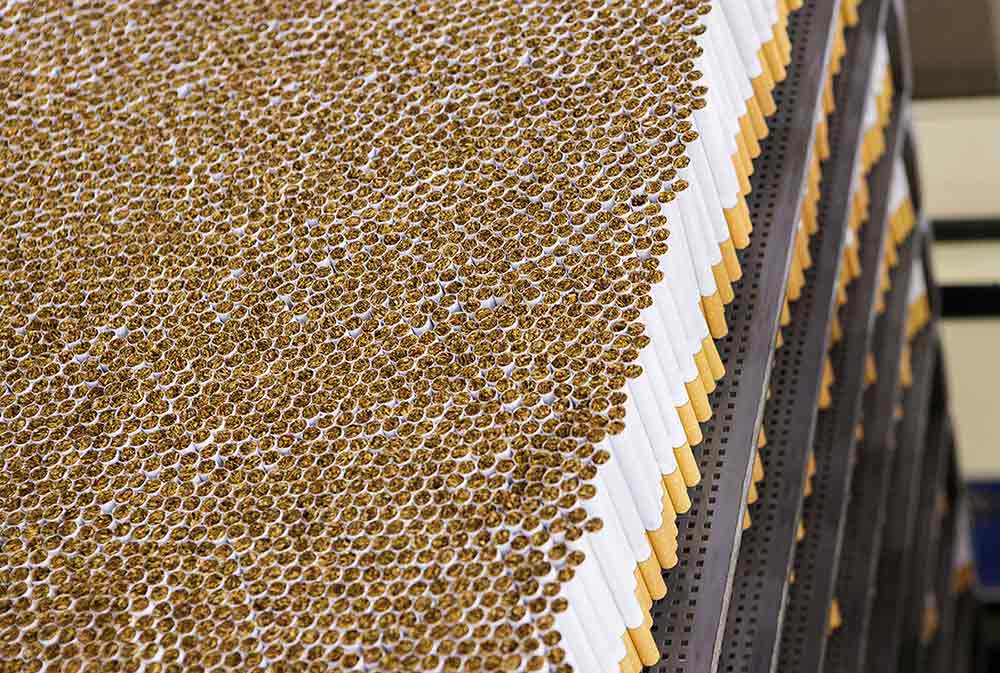- Resources
- News
-
-
Get Email Updates
Sign up for STOP's emails and never miss an update on our latest work and the tobacco industry's activity.
-
Get Funding
Ready to tackle industry interference? You could be eligible for a grant.
-
Share a Tip
Do you have information on tobacco industry misconduct in your country? Let us know.
-
Get Email Updates

The World Health Organization has called climate change the single biggest health threat facing humanity. And the tobacco industry, which is already a key offender against human health, is a major contributor to climate change—making its impact on health even worse.
The industry’s cornerstone product, tobacco, causes immense and far-reaching damage to the planet. But the tobacco industry is often overlooked as an entity that needs to be held accountable for its environmental impacts.
The tobacco industry can no longer lurk in the shadows and continue cutting down trees, spewing carbon dioxide, contaminating waterways, creating toxic litter and poisoning people. For the health of the planet and of people, we need to talk about how tobacco production contributes to climate change.
Tobacco: The world’s most harmful product?
Tobacco is unique in the magnitude of harm is causes. Hardly any other single product can claim to kill more than 8 million people every year and cause over 80 million tonnes of carbon dioxide emissions annually and create the world’s most littered item.
The tobacco industry’s actions have a domino effect: Growing, manufacturing, shipping, selling, using and disposing of tobacco products all impact the environment and, in turn, harm health. When water is diverted to tobacco fields, people’s access to safe drinking water is jeopardized. When waterways are polluted with cigarette butts, fish become contaminated and can sicken the people who rely on them for food. When tobacco manufacturing and shipping pollutes the air, respiratory illnesses rise. And while the health of the entire planet is at stake, people living in low- and middle-income countries (LMICs) will be disproportionately harmed.
The first step in holding the tobacco industry accountable for the environmental harms it causes is understanding just how serious the problem is.

A single cigarette can contribute 14 grams of CO2 equivalent and use 3.7 liters of water throughout its lifecycle.
Carbon dioxide (CO2) emissions
Carbon dioxide (CO2) is a greenhouse gas that contributes to increasing global surface temperatures. The United Nations (UN) describes how these higher temperatures cause worldwide disruption: Wildfires are more ubiquitous and destructive, storms and flooding are more severe, droughts are more common and exacerbate water shortages, and rising water levels threaten to displace coastal communities. At the UN Climate Change Conference (COP26), countries agreed that carbon dioxide emissions must be significantly reduced in order to reach its goal of “net-zero” emissions around mid-century.
The tobacco industry contributes to CO2 emissions in two significant ways. First, the creation of tobacco products, such as cigarettes, produces high volumes of carbon dioxide. A single cigarette can be responsible for up to 14 grams of CO2 equivalent throughout its lifecycle (from tobacco farm to disposal). On a larger scale, every year, tobacco production emits 80 million tonnes of carbon dioxide equivalent. Manufacturing and distribution are especially carbon-intensive, generating carbon emissions equivalent to roughly three million transatlantic flights.
Second, the tobacco industry is a major driver of deforestation—another significant contributor to carbon emissions. Trees store carbon dioxide, and when they’re cut down, they release the carbon they’ve stored into the atmosphere. The industry cuts down 600 million trees every year to produce cigarettes (it takes approximately one tree to produce about 15 packs of cigarettes). Since the 1970s, an estimated 1.5 billion hectares of (mainly tropical) forests have been lost, causing up to 20% of annual greenhouse gas emissions. The sole purpose of these activities? To sustain tobacco addiction and rake in profits.
Plastic pollution
What comes to mind when you think about plastic pollution? Plastic shopping bags? Plastic beverage bottles? What about cigarette butts?
Most manufactured cigarettes contain filters. Many filters are made of cellulose acetate, which is a type of plastic. Not only can this exposure to plastics harm the health of people who smoke filtered cigarettes, they also make cigarette butts a major part of the plastic pollution problem. Every year, 4.5 trillion cigarette butts are littered into the environment—many of them ending up in waterways—and the filters in them are among the 10 most common plastics in the world’s oceans.
Excess plastic in the world hurts humans and animals. The UN reports that exposure to plastics can affect human fertility, hormonal, metabolic and neurological activity, and WHO has cited microplastics in water as a growing public concern. The UN also reports that more than 800 marine species are affected by plastic pollution.
Water use & contamination
Between 2000 and 2017, an estimated 2.2 billion people did not have access to safely managed drinking water. Turning to unsafe or contaminated sources of drinking water can lead to higher transmission of cholera, diarrhea, dysentery, hepatitis A and other diseases. And yet, tobacco production uses over 22 billion tonnes (or, about 8.8 million Olympic-sized swimming pools’ worth) of water ever year—often in countries where water supplies are already stressed. To look at it from a granular perspective, a single cigarette will use about 3.7 liters of water throughout its lifecycle, from growing to disposal.
Growing tobacco also contributes to water contamination. Agrochemical residues have been found in waterways adjacent to tobacco farming communities. The harm doesn’t end after a cigarette has been smoked, either. Cigarette butts often end up in bodies of water, where they poison fish. In one study, enough chemicals leached out of a single cigarette soaked in a liter of water for 24 hours to kill 50% of saltwater and freshwater fish exposed to it for 96 hours.
Let’s talk about it—then take action
The climate crisis is here. It’s time to take action, and that means recognizing the tobacco industry for the climate change driver that it is. The industry has lurked below the surface so far, continuing to pollute, degrade and negatively impact the environment—only to continue causing tobacco-related disease. It’s time for the public, advocates and policymakers to call out the industry for tobacco’s devastating effects on the environment.




